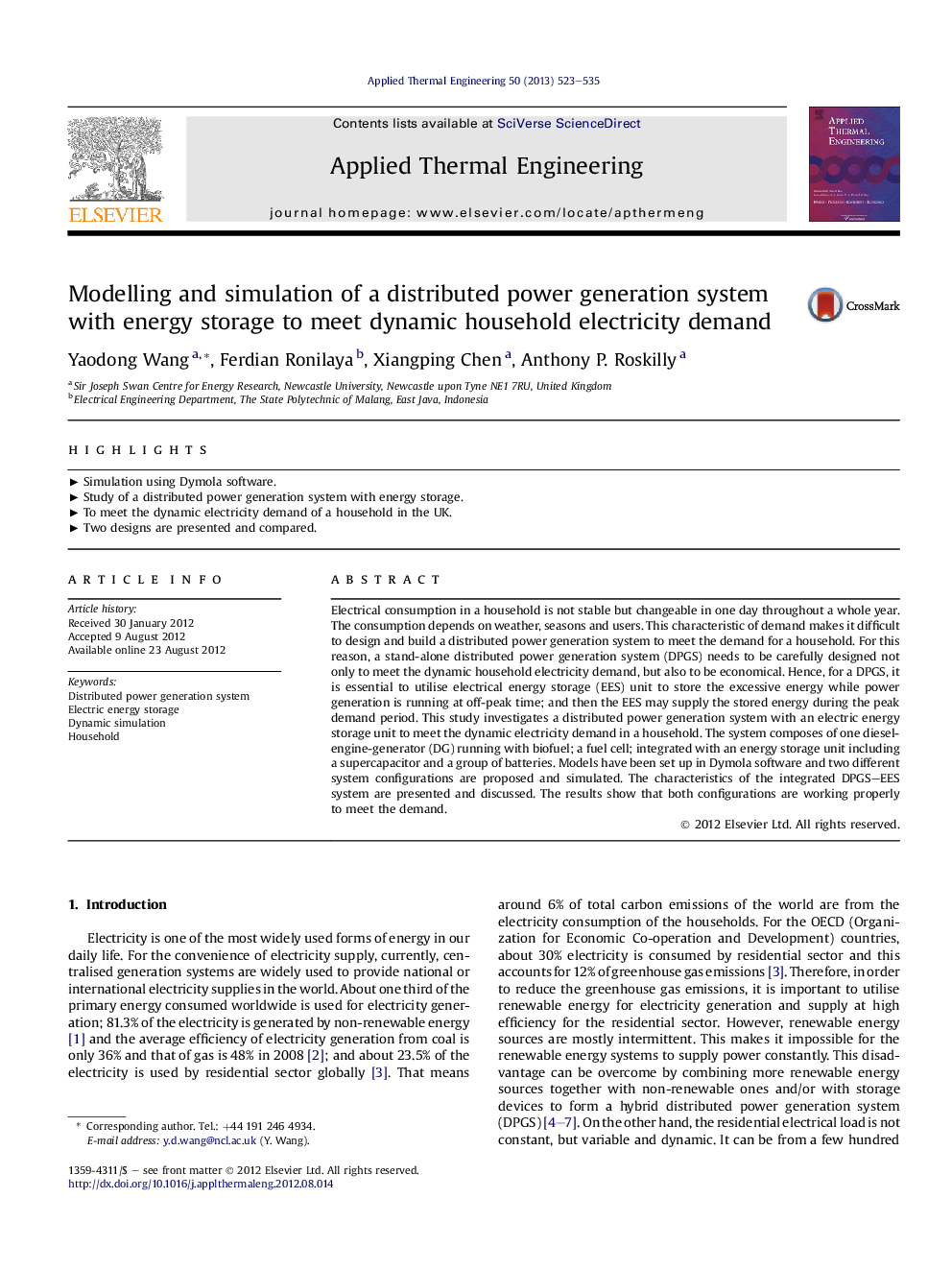| Article ID | Journal | Published Year | Pages | File Type |
|---|---|---|---|---|
| 647271 | Applied Thermal Engineering | 2013 | 12 Pages |
Abstract
Electrical consumption in a household is not stable but changeable in one day throughout a whole year. The consumption depends on weather, seasons and users. This characteristic of demand makes it difficult to design and build a distributed power generation system to meet the demand for a household. For this reason, a stand-alone distributed power generation system (DPGS) needs to be carefully designed not only to meet the dynamic household electricity demand, but also to be economical. Hence, for a DPGS, it is essential to utilise electrical energy storage (EES) unit to store the excessive energy while power generation is running at off-peak time; and then the EES may supply the stored energy during the peak demand period. This study investigates a distributed power generation system with an electric energy storage unit to meet the dynamic electricity demand in a household. The system composes of one diesel-engine-generator (DG) running with biofuel; a fuel cell; integrated with an energy storage unit including a supercapacitor and a group of batteries. Models have been set up in Dymola software and two different system configurations are proposed and simulated. The characteristics of the integrated DPGS–EES system are presented and discussed. The results show that both configurations are working properly to meet the demand.
Related Topics
Physical Sciences and Engineering
Chemical Engineering
Fluid Flow and Transfer Processes
Authors
Yaodong Wang, Ferdian Ronilaya, Xiangping Chen, Anthony P. Roskilly,
